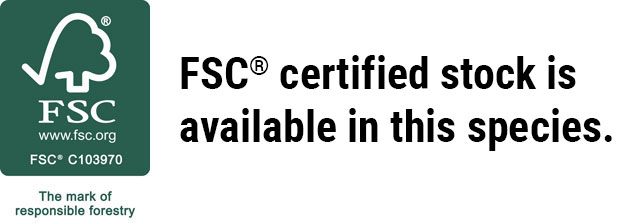Domestic Hardwood Hickory

Latin Name: Carya ovata
Family: Juglandaceae - the Walnut family
Other Common Name(s): Carolina Hickory, Red Heart Hickory, Scalybark Hickory, Shagbark Hickory, Shellbark Hickory, Upland Hickory, White Hickory
Domestic Hardwood
Suitable for Exterior/Interior Use
Interior Use Only
Uses
Flooring, Handles, Interior Trim, Ladders, Wheels, Millwork, Mouldings, Skis,
Distribution
There are 12 Hickory species native to the United States, grouped into “True Hickory” and “Pecan Hickory” categories. True Hickory trees grow throughout much of the eastern half of the United States. Pecan Hickory trees are slightly softer and found in the southern and eastern United States. Hickory trees prefer moist soils, and are rarely found in pure stands.
General Description: The sapwood is very wide and often creamy to nearly white in color. The heartwood is darker in color and is brown to a reddish brown. Boards with contrasting heartwood and sapwood have a rustic look that is sometimes referred to as “Calico Hickory.” The grain is straight, but can be wavy or irregular. The texture is typically very coarse.
Price Range ($ least expensive, $$$$$ most expensive):
$$
Working Properties
Machining: Good
Nailing: Fair
Gluing: Fair
Screwing: Fair
Finishing: Good
Physical Properties
Weight (lbs/BF): 4.1
Specific Gravity: 0.64-0.70
Modulus of Rupture (psi): 10,500-18,400
Modulus of Elasticity (1,000 psi): 1,550-2,070
Side Hardness (lbs): 1720
Additional Information
Sapwood is what is preferred by woodworkers. Like many other species NHLA grading does not consider heartwood a defect. As one of the hardest and strongest woods native to the U.S., hickory is considered difficult to work with. It is often used when shock-resistance is important. Tools need to be sharp when machining to avoid issues. Due to the high tendency to split, pre boring nail and screw holes is recommended. This species glues, stains and finishes well.
Item Availability
4/4 Sel & Btr
4/4 Rustic
5/4 Sel & Btr
8/4 Sel & Btr

